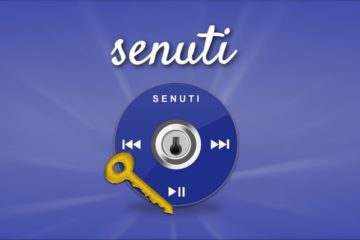Review: Toast 8 Titanium
The Toast series of products from Roxio, now a division of Sonic Solutions, has long been the market leader for managing and burning digital media. But with basic burning functionality built into OS X, there have to be compelling reasons for paying nearly $100 ($80 for an upgrade). Under most circumstances, for many types of users, there will be. This product is thoroughly recommended on one or more of three counts: reliability, ease of use and elegance; enhanced and new functionality; and features not found anywhere else.
The list of new features, enhancements and improvements for Toast 8 Titanium is long and impressive, making this a significant step forward for Toast and one which all serious users of audio and video media who want to preserve such data on CD and DVD should also take. Changes in Toast 8 Titanium fall into five areas: Photo/video, Music/audio, Burning/copying, Files, and User Interface.
New Features: TiVo and EyeTV
Perhaps most striking is the new TiVoToGo feature: with Toast 8 you can now transfer television programs recorded in TiVo format to your Mac – either to watch on its screen and/or burn onto DVD (or CD) for later use on a dedicated standalone player. Such files can also be exported via Toast for iPods and Sony PlayStation Portables (PSP) as well. This is thanks to an exclusive agreement Roxio has secured with TiVo so it would seem unlikely that you will be able to do this with any other software on the platform soon. Although this functionality was not tested in this review, close monitoring of and communication with those who were able to do so suggested it works well.
Then Blu-Ray, the high-capacity (25GB single and 50GB dual-layer) optical disk technology: Toast 8 makes work with this medium easy and reliable with a drive icon appearing on the desktop.
DVD menu backgrounds can now be custom-designed – a good thing since the available examples are few and not always appropriate for every type of movie. There’s now a new photo-quality archiving and slideshow feature which will also work on Windows and can be enhanced with clip-art, and by drawing- and text-editing tools. Of course, there are many other tools which will do that. But it’s an advantage to have them available in what may well be many users’ primary media manager, Toast.
Analogous improvements to the audio capabilities of Toast are very welcome: you can now incorporate crossfades and volume normalization and other plug-ins that enhance the presentation of your work, as well as such tools as track trimming, which have only been available until now in Roxio’s Jam. If you work with music-only DVDs, you can now include menus and utilize Dolby Digital sound.
Audio Discs Burning
The excellent ‘Spin Doctor’ has been completely improved. It’s always been the tool of choice for digitizing cassettes and LPs. Conversion and clean-up of crackly and poppy analog sources have been streamlined and worked well in testing.
It may, though, be for the more routine tasks of burning and copying that users will be most grateful. For instance, there’s improved one-click copy of audio CDs and movie DVD functionality. If you’re doing batches, that really helps. Although these days fewer disks become damaged than used to, the new file recovery tools are a boon. They allow you to try and retrieve from a scratched DVD or CD that is not readable by the Finder and burn what is still readable onto a clean disk. Also good to have is an enhanced compression routine which will fit up to 9 GB onto a standard 4.7 GB DVD. You can now preview movies, etc., before copying them, too. Further, it’s now possible to custom copy compilations and interactively catalog and track all your burned discs’ contents. In similar vein, file browsing with filtering and spotlight search has been integrated. Toast 8 makes storing data to optical media (typically multiple DVDs) much easier. Archiving across disks also seems slightly quicker; from these archives data can be restored in both Mac and Windows formats.
Toast Titanium interface and usability
Toast’s user interface always was uncluttered and deceptively simple. It’s received a new look and seems even simpler, which is no bad thing when you want to keep the workflow across media and onto additional hardware as simple as possible. There’s more helpful feedback of what’s going on, though that’s customizable. Progress during a burn is now in a single, simple floating window with a chunkier feel to it – this is not the standard barber’s pole; the subdued background line graphic constantly moves to show all is well during long encoding operations. Error messages (‘not enough space’, ‘NTSC vs PAL – do you want to encode?’, etc.) have been improved and made easier to handle. On the whole, though, Toast 8 is sufficiently intelligent to take care of most common error conditions – and did, under testing.
If you’ve been in any doubt about whether to buy, or upgrade to, Toast 8, maybe a glance at the file formats which it now supports will convince you: eight types of audio (AAC, AIFF, MP3, WAV, M4A, OGG, FLAC, Dolby Digital AC-3); over a dozen video (AVI, DV, MOV, MPEG-1, 2, 4, DivX, XviD, VOB, VIDEO_TS folder, iMovie, EyeTV, TiVoToGo); and a dozen major graphics formats (BMP, GIF, PDF, PSD, PNG, TIFF, ISO, BIN/CUE, IMG, DMG, CDR, NRG). If that were all, it would be a recommendation in itself. But it gets better: during the testing and evaluation period a number of cross-matched source and target requirements were thrown at Toast 8. It transparently coped with every one without a single dud. Although you can change settings and go for a more customized workflow, when you let Toast decide, it invariably does what you want with just the right results. For the non-specialist and someone whose main interest is speedy and trouble-free transfer/transcoding of media formats to get a disk as an end product, Toast really delivers.
It should be clear by now that this is a big step forward in what can be done with audio and video and CD/DVD storage and eventual managed playback. A perhaps less obvious – but nonetheless desirable – improvement is a new slickness, a welcome smoothness in the user interface. It’s still performance that counts, though: in testing Toast was pushed to its limits without ill effects. It’s become an almost indispensable system to manage digital media resources. Nor are most users likely to have recourse to the Roxio support site. Rarely ideal, it has improved. Turnaround time (though the method is still impersonal) is much better. The Toast Forum is lively and helpful and the attention to customer service definitely on the up. In terms of the technology, then, the trend would seem to be that Toast is extending its reach both into editing and managing as much as into multiplicity of formats, – with the added appeal of technologies such as TiVo and DivX. Recommended.
Pricing:
Full price: $89.99
Upgrade version: $79.99 after $20 mail-in rebate

